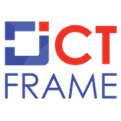29th May 2025, Kathmandu
Nepal Investment Mega Bank (NIMB) is setting a benchmark in financial inclusion by championing Deprived Sector Lending (DSL) and Subsidized Loan programs. These initiatives are strategically designed to empower marginalized communities, boost entrepreneurship, and stimulate sustainable economic growth across Nepal. By focusing on agriculture, livestock, and women’s empowerment, NIMB is actively creating jobs and promoting self-reliance in underserved regions.
NIMB Nepal Deprived Sector Lending
Understanding NIMB’s Deprived Sector Lending (DSL)
NIMB’s Deprived Sector Lending reflects its commitment to inclusive banking and social responsibility. The DSL program provides essential financial services to groups and individuals defined under the “deprived sector,” including:
Low-income earners
Physically challenged individuals
Indigenous and disadvantaged communities
Small farmers and laborers
The goal is to reach Nepal’s most vulnerable populations—particularly in remote areas—by enabling access to credit and supporting self-employment. DSL loans cater to diverse financial needs, such as:
Working capital for small businesses
Vehicle purchase loans for cabs, e-rickshaws, Safa Tempos (up to NPR 2.5 million)
Fixed asset acquisition like machinery or tools
Agribusiness and livestock farming
Start-up or business enhancement loans
Two Approaches to DSL
Direct Lending
NIMB offers direct financial support to eligible borrowers through:
NIMB Saral Karja: Simplifies access to credit for vulnerable individuals in remote areas, fostering self-employment and income generation.
NIMB Atti Sulabh Ghar Karja: Tailored for ex- and in-service Nepal Army personnel and other eligible citizens aged 18–60. Offers loans up to NPR 2 million, excluding agricultural use.
Indirect Lending
Through strategic partnerships, NIMB extends its reach:
Wholesale lending to Category D financial institutions and cooperatives that lend to disadvantaged individuals at the grassroots level.
Collaboration with agencies: Government and non-government organizations facilitate micro-level loans and assist with borrower identification.
Investment in D-Class institutions: NIMB also invests in financial instruments (shares, debentures, bonds) of D-class financial entities to reinforce DSL infrastructure.
NIMB’s Subsidized Loans: Enabling Growth for the Underserved
Complementing DSL, NIMB’s Subsidized Loan Programs are targeted at uplifting low-income groups, marginalized women, Dalit communities, returning migrant workers, and youth. These loans feature reduced interest rates and flexible terms to support employment, education, and entrepreneurship.
Key Subsidized Loan Products
Commercial Agriculture and Livestock Loan
Purpose: Strengthens Nepal’s agricultural backbone.
Limit: Up to NPR 100 million (with NRB approvals).
Eligibility: Nepali citizens or companies involved in agriculture.
Subsidy: 5% for loans up to NPR 50 million; 2% above that.
Rate: Base rate + 2%, up to 5 years.
Literate Youth Self-Employment Loan
Purpose: Motivates educated youth toward entrepreneurship.
Limit: NPR 0.7 million.
Eligibility: Bachelor’s degree holders with 7 days of certified training.
Subsidy: 5%, with a 5-year term.
Foreign Return Youth Project Loan
Purpose: Supports migrant returnees to start businesses at home.
Limit: NPR 1 million.
Eligibility: Degree holders with relevant training.
Subsidy: 5%, for a 5-year period.
Women Entrepreneur Loan
Purpose: Empowers women to establish and grow businesses.
Limit: NPR 1.5 million.
Eligibility: Nepali women or women-owned firms.
Subsidy: 6%, for up to 5 years.
Marginalized Community (Dalit) Business Development Loan
Purpose: Promotes economic participation of Dalit communities.
Limit: NPR 1 million.
Eligibility: Certified Dalit individuals or Dalit-owned firms.
Subsidy: 5%, for a 5-year term.
Higher Technical and Vocational Education Loan
Purpose: Enables access to skill-based education.
Limit: NPR 0.5 million.
Eligibility: Secondary-level graduates.
Subsidy: 5%, for a 5-year term.
Earthquake Victim Residential Construction Loan
Purpose: Rebuild homes for earthquake-affected individuals.
Limit: NPR 0.3 million.
Eligibility: Certified victims without alternative housing.
Subsidy: 5%, with flexible tenure.
Textile Industry Loan
Purpose: Strengthens Nepal’s domestic textile sector.
Limit: Up to NPR 50 million.
Eligibility: VAT-registered textile businesses.
Subsidy: 5%, for up to 5 years.
Higher Technical and Vocational Training Loan
Purpose: Promotes vocational upskilling for job creation.
Limit: NPR 0.2 million.
Eligibility: Any Nepali citizen.
Subsidy: 5%, with a 6-month grace period.
Youth Self-Employment Loan
Purpose: Encourages youth with basic education and vocational training to start businesses.
Limit: NPR 0.5 million.
Eligibility: Secondary-level education and 7 days of certified training.
Subsidy: 5%, with a 5-year tenure.
Conclusion: NIMB’s Vision for Inclusive Growth
Nepal Investment Mega Bank’s Deprived Sector Lending and Subsidized Loan schemes are more than financial products—they’re instruments of transformation. By empowering women, supporting youth, strengthening agriculture, and uplifting marginalized groups, NIMB is enabling thousands of Nepalis to build better futures.
These inclusive banking efforts are crucial for bridging the financial divide, creating jobs, and driving economic development—especially in Nepal’s rural heartlands. With a strategic focus on sustainability and equality, NIMB is not just building a stronger bank, but a stronger Nepal.
